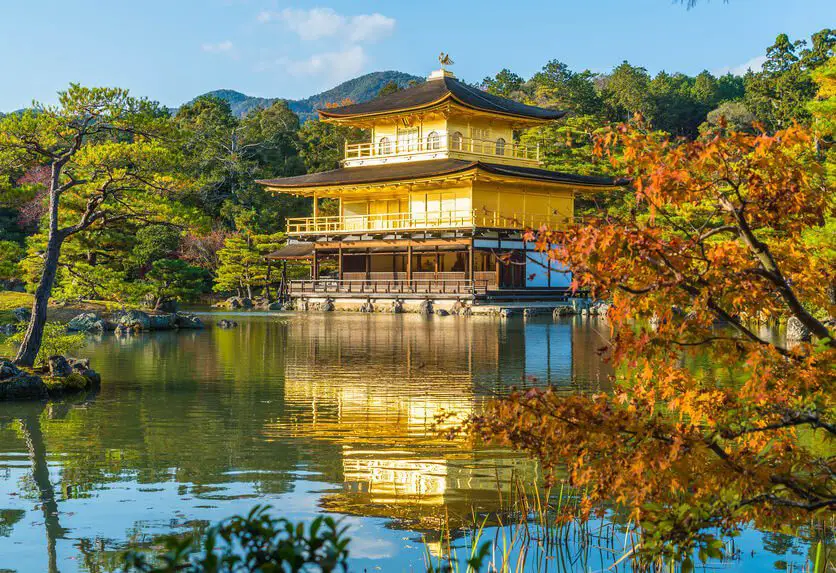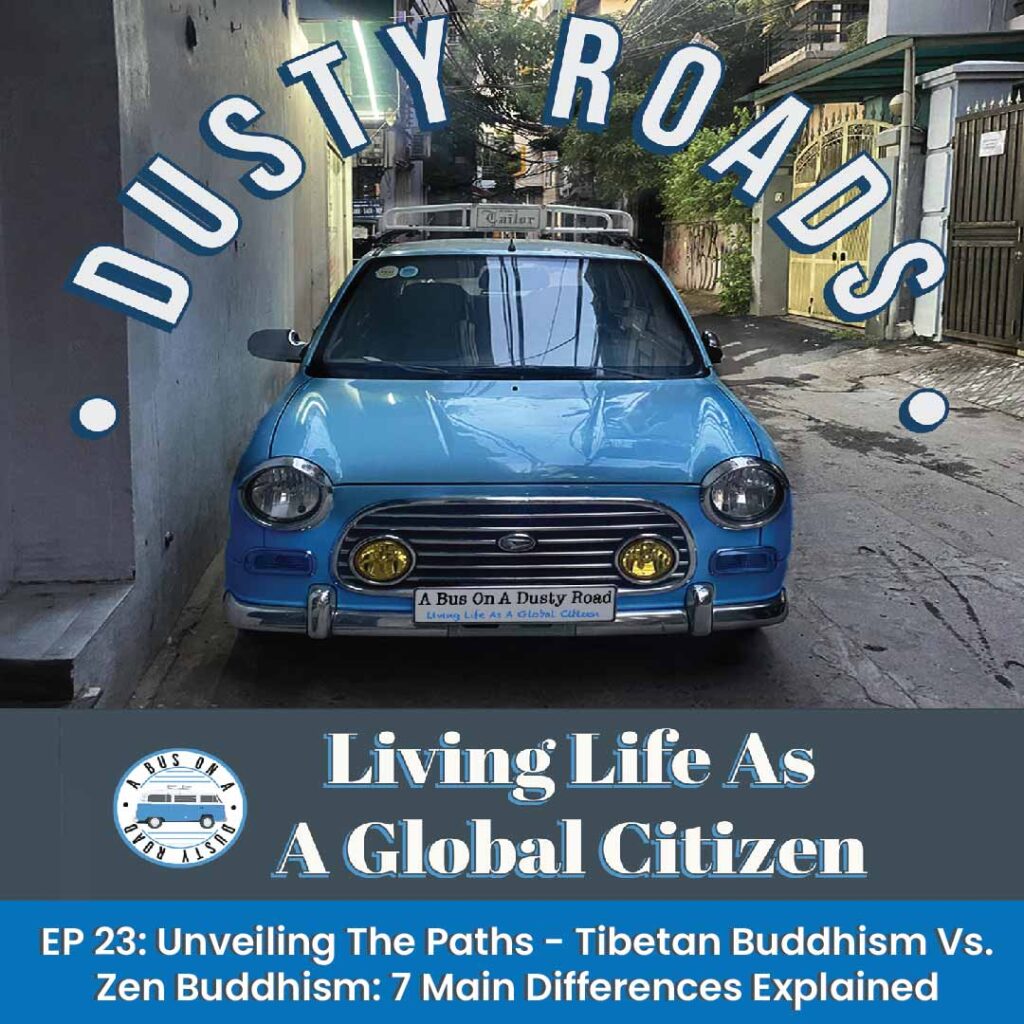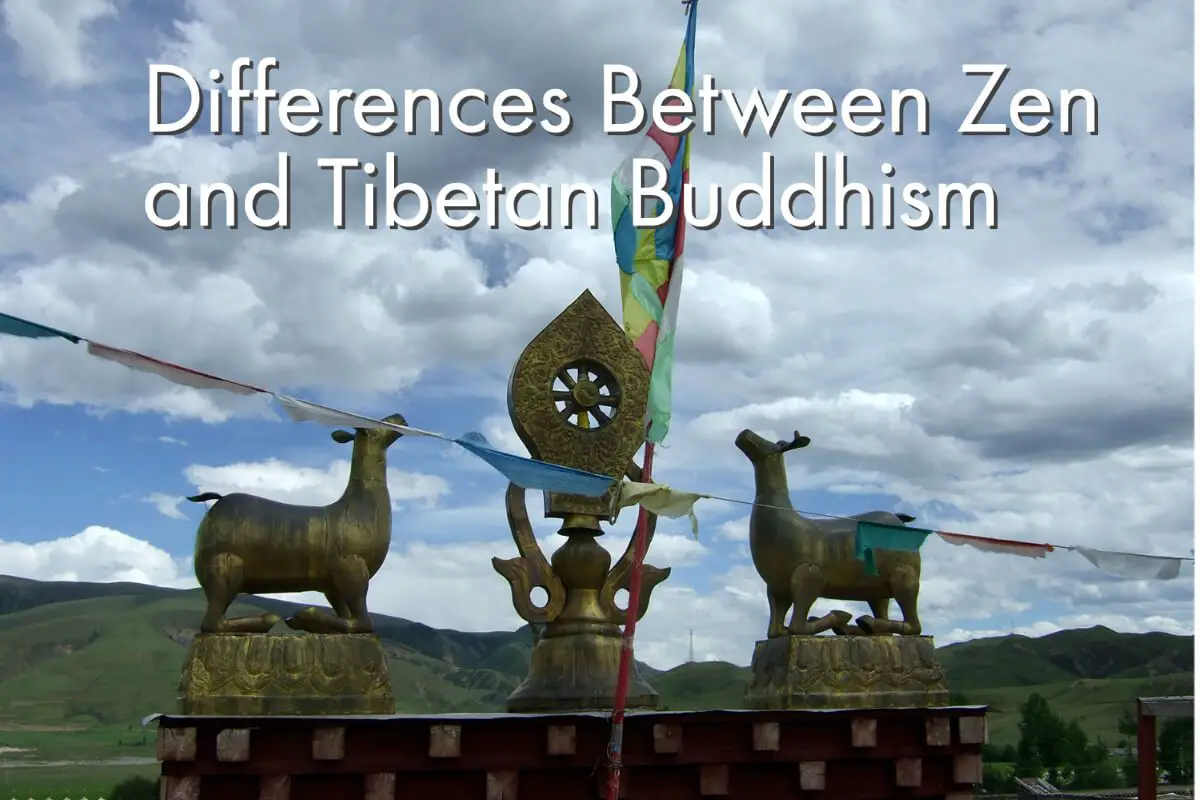Understanding Buddhism is not always easy. When traveling to Asia, it is good to understand some differences between the two major Buddhist sects.
Tibetan and Zen Buddhism are Buddhist sects traditionally practiced in different parts of Asia. Zen Buddhism is practiced mainly in East Asia, whereas Tibetan Buddhism is practiced mainly in Tibet, Mongolia, and other parts of Asia. Zen and Tibetan Buddhism are also very different in how they practice Buddhism.
Table of Contents
- Tibetan Buddhism Vs. Zen Buddhism, 7 Main Differences Explained
- 1 – Zen is Minimalist, and Tibetan Elaborate Buddhism
- 2 – Zen Is From Japan, and Tibetan Buddhism is from Tibet
- 3 – Tibetan Buddhism is Better Known In The West Than Zen
- 4 – Worldwide, There Are More Zen Buddhists than Tibetan Buddhist
- 5 – Zen and Tibetan Buddhist Emphasize Different Things
- 6 – Zen Meditation Emphasis Breath and Tibetan Mantras
- 7 – Tibetan Buddhism Is More Religious Than Zen
- 10 Enlightening Facts About Buddhism
- Frequently Asked Questions
- Related Questions
Tibetan Buddhism Vs. Zen Buddhism, 7 Main Differences Explained
Tibetan Buddhism and Zen Buddhism are two distinct schools of thought, originating in different parts of the world and with somewhat contrasting philosophies. While both share a spiritual focus on achieving enlightenment, their approaches to meditation and other practice aspects can appear quite different.
Some people spend a lifetime understanding and studying Buddhism; there are many differences between Zen and Tibetan Buddhism than the seven basic differences listed below.

These seven differences are some of the significant differences between Zen and Tibetan Buddhism.
1 – Zen is Minimalist, and Tibetan Elaborate Buddhism
Zen Buddhism is a minimalist or minimalist kind of Buddhism. The pendant to live a simple life or minimalist life is strongly influenced by Zen Buddhism.
Tibetan Buddhism is a much more elaborate form of Buddhism. When you go to Tibet, you will see how elaborate some of the Tibetan Buddhist temples are.
2 – Zen Is From Japan, and Tibetan Buddhism is from Tibet
Zen Buddhism is a mixture between Indian Mahayana Buddhism and Taoism. Zen Buddhism began in China and then spread to Korea and Japan.
As Zen is a Japanese word, most people think of Zen Buddhism and think of Japan; the word Zen can be translated to mean absorption or meditative state.
On the other hand, Tibetan Buddhism is a much older form of Buddhism that started in the 6 to 9th Century BCE. Tibetan Buddhism came from India to Tibet.
3 – Tibetan Buddhism is Better Known In The West Than Zen
Tibetan Buddhism is very well-known in the West. There are many Tibetan temples in the United States and Europe. This is mainly due to the popularity of the Tibetan Buddhism leader, the Dalai Lama.
On the other Zen Buddhism does not have the same recognition as Tibetan Buddhism does in the Western world. Most people in the West have heard of Zen, but they may not necessarily equate to Zen Buddhism.

4 – Worldwide, There Are More Zen Buddhists than Tibetan Buddhist
Worldwide, there are more Zen Buddhists than Tibetan Buddhists. This is because Zen Buddhism is prominent in many parts of the world, including Korea, Japan, Vietnam, and China. Zen Buddhism accounts for 20% of all Buddhist temples in Japan.
On the other hand, the main places where Tibetan Buddhism is practiced are Tibet, Mongolia, northern Nepal, and a small part of India, Siberia, Far East Russia, and Northeast China. Tibetan Buddhism is also the state religion of Bhutan. Population-wise, the Tibetan Buddhism-practicing countries are far less densely populated than Korea, Japan, Vietnam, and China.
Tibetan Buddhism is considered to be one of the smaller branches of Buddhism. This may surprise many people since most people have heard of Tibetan Buddhism because it is so prevalent in the West.
Listen to our podcast about uncovering the paths of Tibetan Buddhism vs Zen Buddhism: 7 Main Differences explained below or by clicking below

5 – Zen and Tibetan Buddhist Emphasize Different Things
Zen Buddhism emphasizes rigorous self-restraint and meditation practice and looks into the nature of the mind and things. Zen Buddhism looks at personal expression as the insight into daily life, especially into the benefit of others.
Zem Buddhism focuses on clearing your mind through meditation. The main aim of Zen Buddhism is to discover the light hidden within each person.
In Tibetan Buddhism, supernatural beings are prominent. Buddhas and Bodhisattvas abound, as do other gods and spirits. Someone looking from the outside into Tibetan Buddhism may feel that Tibetan Buddhism is almost primitive; Tibetan Buddhism is very deep, with logical philosophies on life, death, rebirth, and existence.
Tibetan Buddhism’s spiritual development aims to receive Buddhahood or enlighten oneself to help others achieve the same state of Buddhahood.
6 – Zen Meditation Emphasis Breath and Tibetan Mantras
Zen Buddhism is about emptying your mind while following your breath. Zen Buddhism’s core is to completely vacate or empty your mind to a state of “nothingness” so that you can purge yourself of all desires, ambitions, and emotions.
Tibetan Buddhism uses mantras and visualizations; mantras are short prayers that are thought to alter one’s mind and help connect with a particular Buddha or enlightened being.

7 – Tibetan Buddhism Is More Religious Than Zen
Tibetan Buddhism is thought of as a more religious form of Buddhism. This is because Tibetan Buddhism has supernatural beings—Buddhas, Bodhisattvas, and other gods and spirits. Tibetan Buddhism also has some very complex rituals and prayers.
Zen Buddhism also has some rituals, but they are all minimalist rituals. Zen Buddhism is generally less complicated and less formal than Tibetan Buddhism.
Even though Zen and Tibetan Buddhism are different kinds of Buddhism, one is not necessarily better; they are both authentic forms of Buddhism.
Like so many other things in life, Buddhism is a personal choice.
10 Enlightening Facts About Buddhism
Buddhism, one of the world’s oldest religions, offers a spiritual path filled with profound teachings and practices. Originating in India over 2,500 years ago, it has since spread globally, touching the lives of millions.
Here are ten intriguing facts about Buddhism that shed light on its depth and diversity:
- Founder: Buddhism was founded by Siddhartha Gautama, known as the Buddha or “The Enlightened One.” Born into royalty, he renounced his luxurious life in search of enlightenment and, upon attaining it, spent his life teaching others the path to liberation.
- The Four Noble Truths: Central to Buddhist teachings are the Four Noble Truths, which diagnose human suffering (Dukkha) and prescribe a way out of it. They pertain to the existence of suffering, its origin, its cessation, and the path leading to its cessation.
- The Eightfold Path: The path to enlightenment and cessation of suffering is encapsulated in the Eightfold Path, which offers guidelines on understanding, intention, speech, action, livelihood, effort, mindfulness, and concentration.
- No Central God: Unlike many religions, Buddhism doesn’t revolve around the worship of a central god. Instead, it emphasizes individual spiritual cultivation and understanding of one’s nature and reality.
- Three Main Branches: Buddhism has three primary schools or branches: Theravada, Mahayana, and Vajrayana. Each has its unique texts, practices, and interpretations of the Buddha’s teachings.
- Rebirth and Karma: Buddhism believes in the cyclical nature of existence, where life, death, and rebirth are interconnected. One’s actions (karma) in the present life determine the circumstances of their future rebirth.
- Ahimsa (Non-violence): Buddhists strongly adhere to the principle of non-violence, believing in causing no harm to any living being, leading many Buddhists to adopt vegetarian or vegan lifestyles.
- Buddhist Scriptures: The Tripitaka, or “Three Baskets,” is a traditional term for the Buddhist scriptures. It consists of the Vinaya Pitaka (disciplinary rules), Sutta Pitaka (Buddha’s discourses), and Abhidhamma Pitaka (philosophical teachings).
- Bodhisattva Vow: In Mahayana Buddhism, there’s a strong emphasis on the Bodhisattva ideal, where individuals vow to attain enlightenment for themselves and to help liberate all sentient beings from suffering.
- Global Reach: While Buddhism originated in India, it spread throughout Asia, with significant populations in countries like Thailand, Tibet, Japan, and Myanmar. In recent decades, its teachings have found resonance in the West, leading to a global Buddhist community.
Buddhism, with its profound teachings on impermanence, compassion, and interdependence, offers relevant insights in today’s interconnected and often chaotic world.
Whether one is a practitioner or a curious observer, there’s a wealth of wisdom in Buddhism that can enrich and enlighten.
At A Bus On A Dusty Road, we talk about history, travel, life, sailing, and ex-pat living. We are all about “Living Life As A Global Citizen.” We explore social, cultural, and economic issues and travel.
We would love to have you be part of our community. Sign up for our newsletter to keep up-to-date by clicking here. If you have any questions, you can contact me, Anita, by clicking here.
Listen to our Podcast called Dusty Roads. You can find it on all major podcast platforms. Try out listening to one of our podcasts by clicking here.
Subscribe to our A Bus On A Dusty Road YouTube Channel filled with great videos and information.
Frequently Asked Questions
What is the difference between Zen Buddhism and Tibetan Buddhism?
Zen Buddhism and Tibetan Buddhism are two distinct branches of Buddhism. Zen emphasizes meditation and direct experience, while Tibetan Buddhism incorporates intricate rituals, visualization practices, and the belief in reincarnated spiritual leaders.
Which is older, Zen Buddhism or Tibetan Buddhism?
Zen Buddhism is considered older than Tibetan Buddhism. Zen traces its roots to China in the 6th century, while Tibetan Buddhism emerged in the 7th century in Tibet.
What is the primary focus of Zen Buddhism?
The primary focus of Zen Buddhism is on the practice of meditation (zazen) and attaining direct insight into one’s true nature, often through the guidance of a Zen master.
What are some key features of Tibetan Buddhism?
Tibetan Buddhism is characterized by its elaborate rituals, colorful visual symbolism, the veneration of spiritual leaders (such as the Dalai Lama), and the integration of elements from Bon, the pre-Buddhist religion of Tibet.
Are there any similarities between Zen and Tibetan Buddhism?
Both Zen and Tibetan Buddhism share a common root in Mahayana Buddhism, emphasize the cultivation of wisdom and compassion, and seek to attain liberation from suffering through Buddhist practices.
Which tradition is more prevalent globally, Zen Buddhism or Tibetan Buddhism?
Tibetan Buddhism has gained more global recognition and popularity compared to Zen Buddhism. The Dalai Lama’s teachings and the Tibetan Buddhist diaspora have contributed to the wider dissemination of Tibetan Buddhist practices and teachings outside of Tibet.
What is Kadampa Buddhism, and how does it relate to Tibetan Buddhism?
Kadampa Buddhism is a Mahayana Buddhist tradition that originated in India and was later incorporated into Tibetan Buddhism. It emphasizes the practice of meditation, compassion, and the application of Buddhist teachings in daily life.
Related Questions
How Strong Are Confucian Values In Vietnam?
The Confucian values have influenced Vietnamese society and culture with piety to parents, the patriarchal society, worship, and respect for ancestors. There is also critical respect for those who are older than you. The Vietnamese education system teaches many Confucian values, ingrained in the entire education system and society.
You can discover more by reading How Strong Are Confucian Values In Vietnam? by clicking here.
Where Is The Ching Ming (Qing Ming) Festival Celebrated?
The Ching Ming (Qing Ming) festival is celebrated in most parts of Asia, especially in any country with a large Chinese community. Not all countries will celebrate this cultural festival as a public holiday, but in many parts of Asia, you will find people taking time off work as they need to go with their families to their family gravesites.
You can learn more by reading Where Is The Ching Ming (Qing Ming) Festival Celebrated? All About by clicking here.


